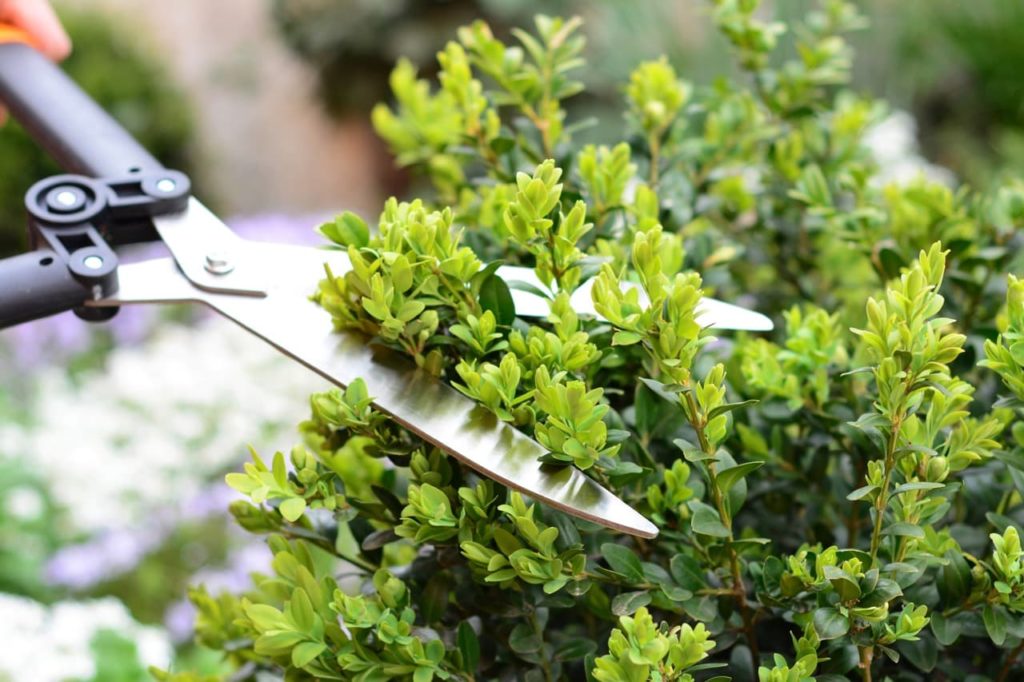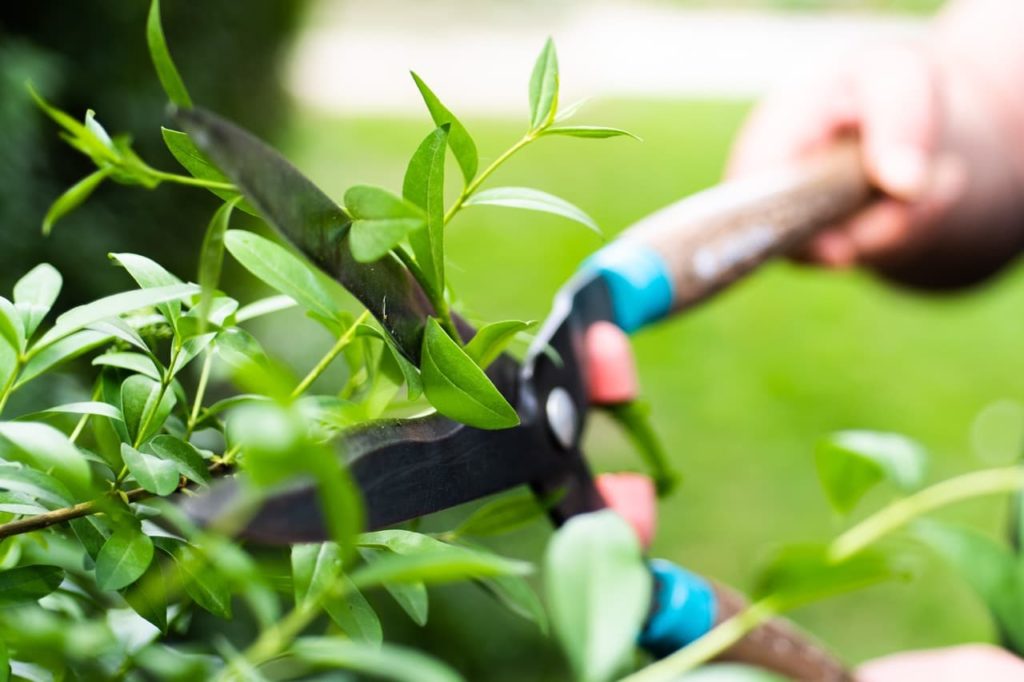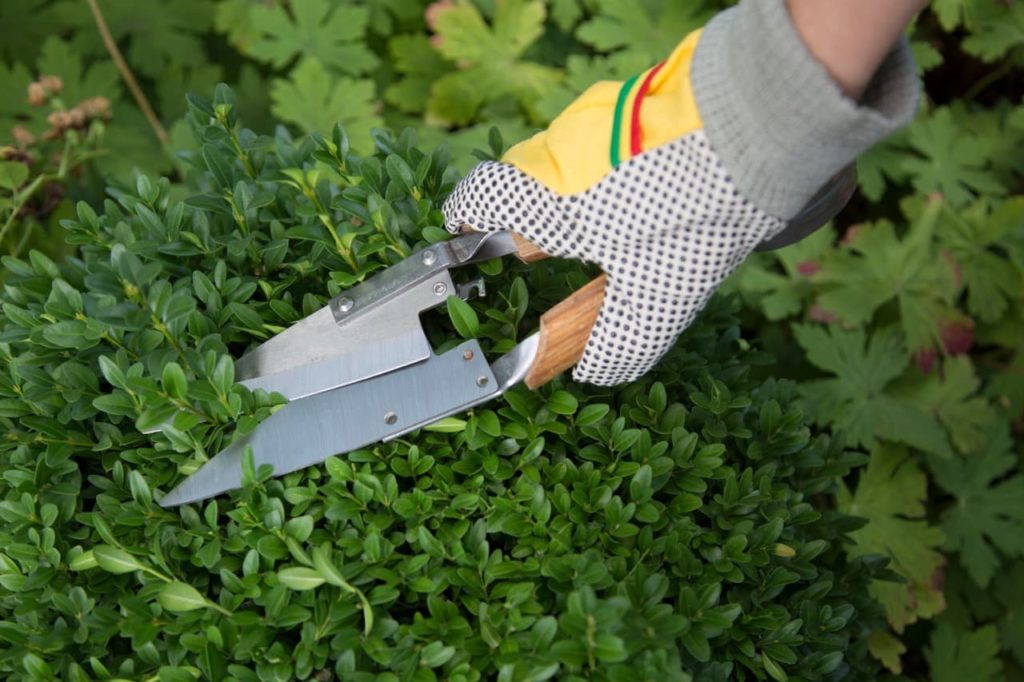Cutting Back Box (Buxus): Establishment, Maintenance And Renovation Pruning Explained


Elizabeth is a Permaculture Garden Designer, Sustainability Consultant and Professional Writer, working as an advocate for positive change. She graduated from the University of St. Andrews with an MA in English and Philosophy and obtained a Diploma in Applied Permaculture Design from the Permaculture Association.
Reviewed By COLIN SKELLY

Colin is a Horticulturist and Horticultural Consultant with experience in a range of practical and managerial roles across heritage, commercial and public horticulture. He holds the Royal Horticultural Society’s Master of Horticulture award and has a particular interest in horticultural ecology and naturalistic planting for habitat and climate resilience.
Contributions From BILL IRVING

Bill is the Director of Boxtrees Nursery, a specialist online retailer in Suffolk specialising in hedging and topiary plants including Buxus, Taxus, Ilex and more.

Topiary Artist based in the UK who is a member of the European Boxwood and Topiary Society and is the founder of Modern Mint. Having worked all over the UK and in New York, Darren has been featured in articles by The Guardian and has featured in Garden Masterclass videos on YouTube. He is also currently writing a book entitled ‘Modern Topiary’.
IN THIS GUIDE
BOXWOOD GUIDES
Box Blight
Feeding
Pruning
Box is popular for hedging and topiary forms in the UK and can be a versatile plant to use in a garden.
However, while this plant is well suited to many of our gardens, it is also susceptible to a range of problems, including box blight and box caterpillars.
The problems to which it is prone make it especially important to keep box as healthy as possible and to make sure we do everything we should with every element of its care.
A healthy box is less likely to succumb to any problems and more likely to withstand any issues that do arise when growing this plant in a garden.
Pruning is one of the things that we all need to make sure that we get right when it comes to growing these plants in our gardens.
| Difficulty | Easy |
| Equipment Required | Secateurs or pruning shears, gardening gloves |
| When To Prune | Varies |
When To Prune Box
When you should prune box very much depends on the age of the Buxus plant in question and on the aims of the pruning.
There are three main types of pruning that you might think about if you are pruning box.
The first of these is establishment pruning on young box plants, which is usually carried out in May, with perhaps some further work between then and September.

The second is maintenance pruning to maintain the shape and form of box that has become established in the garden.
This maintenance pruning is best carried out in August or September.
The final type of pruning is renovation pruning on an older specimen or hedge that has become neglected.
Hard pruning for renovation is usually carried out in May.
Establishment Pruning On Young Buxus
The goal of establishment pruning for young box trees is to encourage bushy growth and fill out the form of the hedge or topiary that we desire.
First of all, when the box plants are young, the stems should be cut back by one-third of their length in May to encourage them to bush out.
Potentially, further trimming might also be undertaken on these young plants between May and August in order to shape and train box to its desired shape, size and form.
“Traditionally, Buxus is trimmed throughout the summer to maintain a tight neat, clipped appearance,” explains Bill Irving from Boxtrees Nursery.

“However, we recommend minimal trimming in late summer when growth has slowed, as we have found this reduces the risk of box blight.
“Looser-grown Buxus seems much less susceptible to pests and diseases.”
Darren Lerigo from the European Boxwood and Topiary Society agrees with this method, especially when pruning for hedging:
“Cut less often, once a year is fine, and get your timings right, pruning in September,” he says.
“The second flush of growth will have finished at this time, so what you prune will stay looking pristine all through the winter, leaving you with a clean, clipped look for 6 months.”
Maintenance Pruning For Mature Box
Mature box plants are best trimmed to keep them in shape in the late summer.
It is best to do so then, as by this stage the new shoots should have hardened off and growth should have slowed.
The reason that it is best to avoid trimming mature box earlier is that if you do so, this creates a flush of soft growth that can be vulnerable to damage from drying winds, leaf scorch, hot sun and diseases like box blight.
Pruning in August or September also helps to ensure that the hedge or topiary form continues to look neat and tidy during the winter months.
Hedges are often trimmed freehand to maintain their shape.

Topiary forms may sometimes have a guide framework to follow, though are also sometimes simply trimmed using a freehand approach.
Taking your time and having an aesthetic eye is crucial when pruning to maintain a very neat form when growing box.
This is a plant that lends itself to formality, though it can also be allowed to grow in a far more loose and natural form.
“When pruning, go over hedges a few times, not just once,” Darren adds.
“Box has a frustrating habit of folding the leaves down as you clip, flicking an uncut leaf back up into the air, ruining the outline of the shape you are trying to make, so go over it around 3-4 times.

“This is extra work, but the hedge then looks amazing and draws the eye.
“Remember, if you prune a boxwood hard it grows back, meaning that you can reinvent your garden regularly.”
Bill also has some tips on what form to prune your box shrub into to help prevent and reduce the risk of box blight.
“With these hedges, it is good practice to form a ‘batter’.
“This is a tapered outline with the base as the widest point and allows light into the bottom of the hedge.”
Renovation Pruning
If a box hedge or topiary has become old, neglected and left unpruned over a period of time, it may have become weak, straggly and patchy and need more extensive pruning to put things right.
Box can fortunately respond quite well to being cut back hard in the late spring.
Potentially, you can cut the box back to within 15cm so that new growth will emerge and the plant can recover.

This strategy is drastic and a little risky, but it can often have favourable results.
After any pruning, it is a good idea to replenish the mulch around the base of the box by adding plenty of organic matter that will help to keep the box well-fed as well as offer it and the soil in which it grows some protection.
“Mulching with wood chips or fine bark can be a good way to try to prevent box blight,” shares Horticultural Consultant Colin Skelly.
“It provides organic matter and retains moisture, which promotes plant health. It also limits splash back onto lower leaves from the soil level, limiting the opportunity for blight spores to splash back onto foliage and spread.”
As you can tell from the above, pruning Buxus is not really complicated, as long as you keep in mind the age of the box and what you are trying to achieve.
